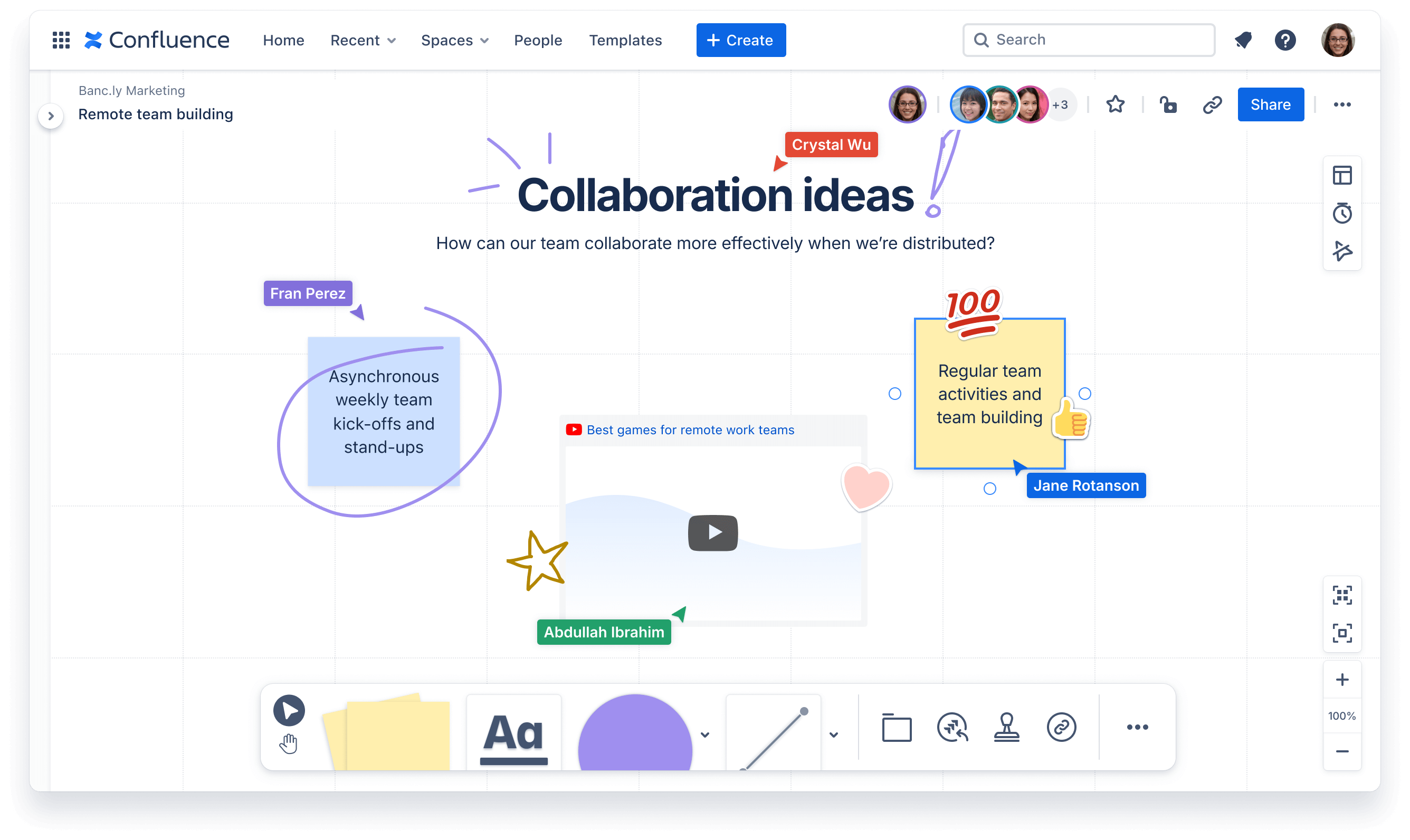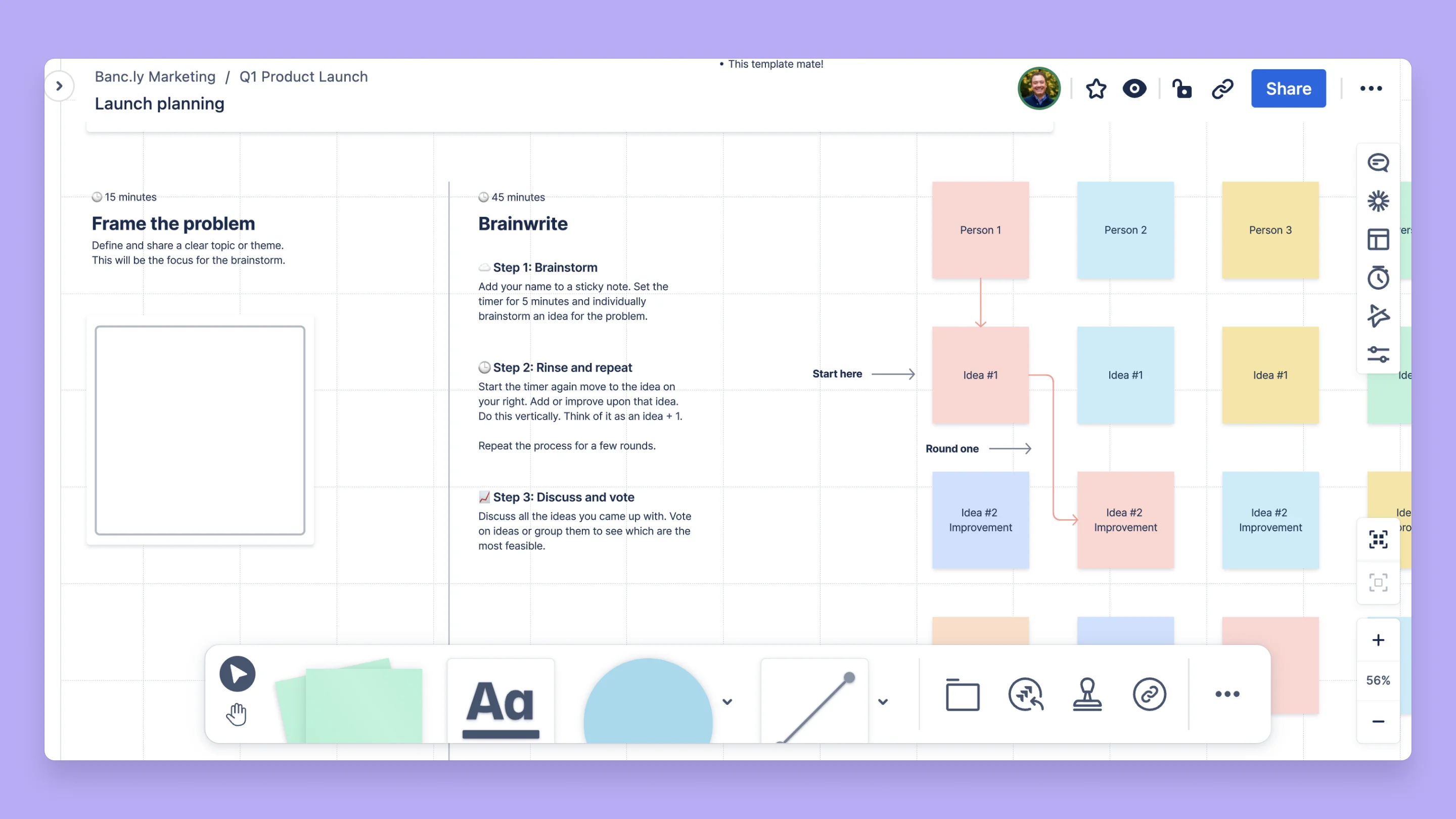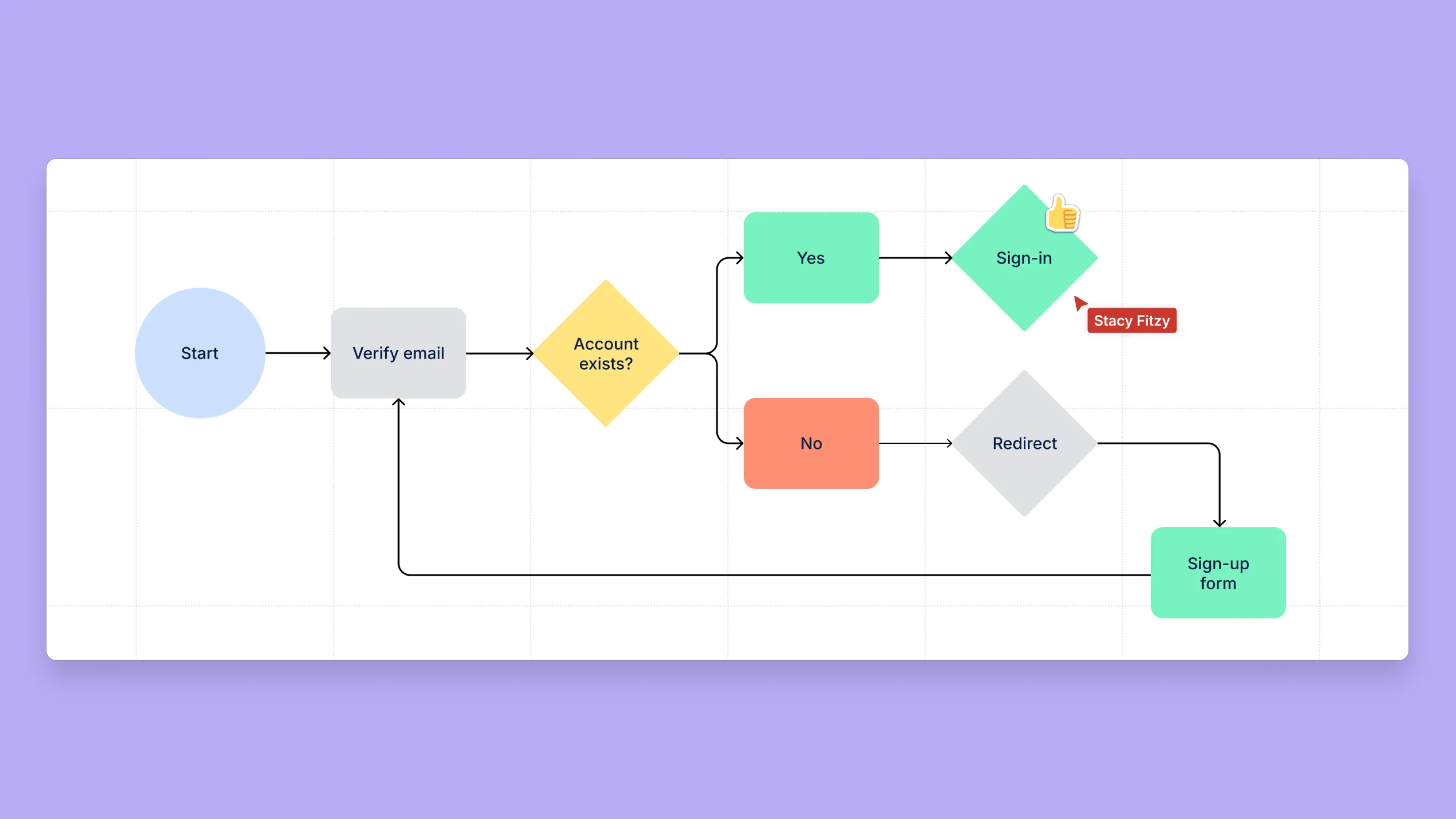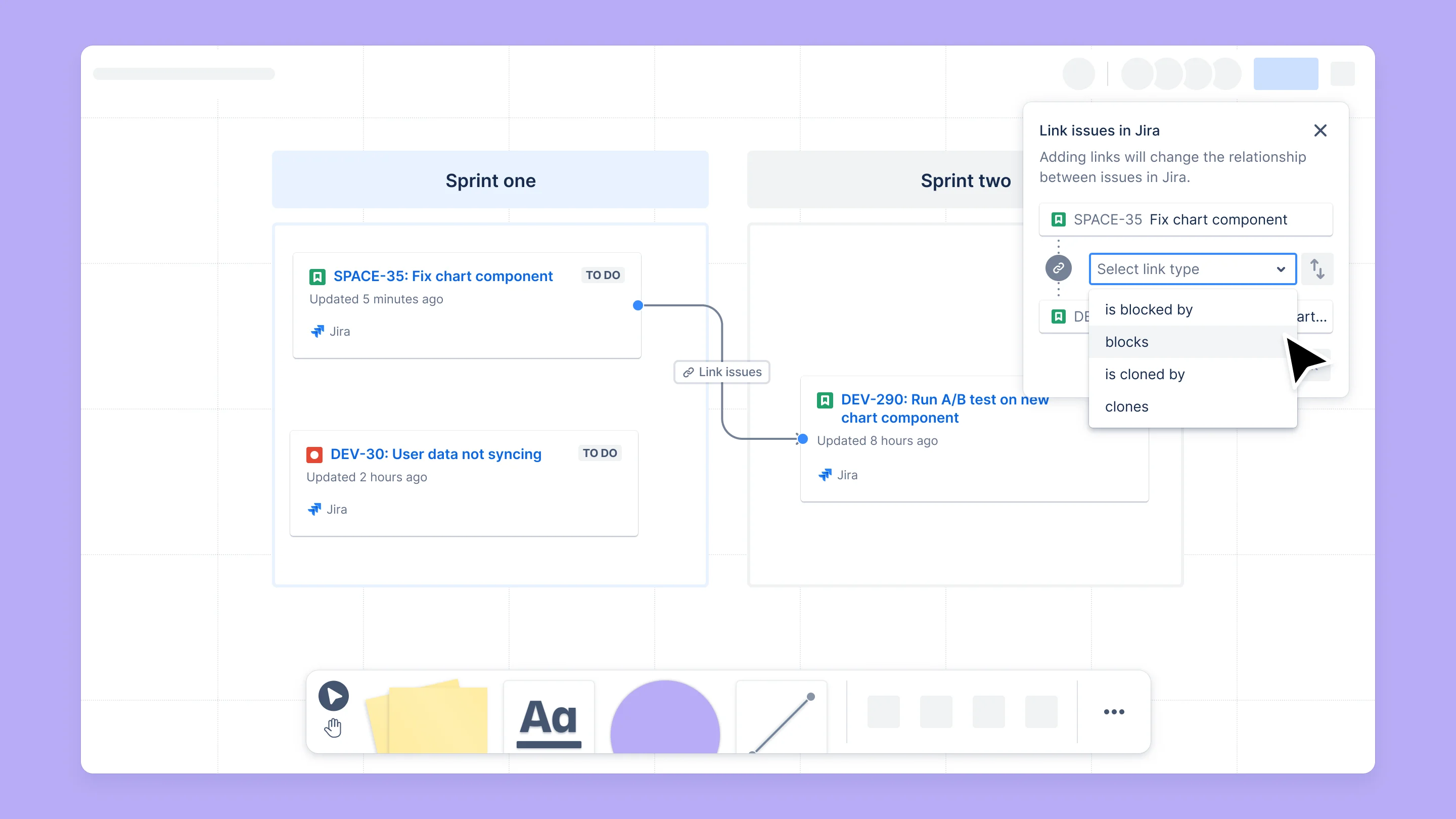Confluence whiteboards for Marketers: Take collaboration to a new level
Marketing teams can’t survive on an island. Team members must work closely with each other to ensure a unified brand message and strategy across all channels. However, cross-functional collaboration with other stakeholders such as sales teams, product managers, and customer support is also essential to ensuring marketing efforts align with business objectives and meet customer needs. Without these insights, it’s impossible to get an accurate picture of how marketing campaigns are performing and what can be done to improve them.
A recent Hubspot study found that 35% of marketers say their top challenge is achieving effective communication between themselves and sales. The study also found that companies with well-aligned sales and marketing teams see 27% faster profit growth and 36% higher customer retention.
Better cross-team collaboration starts with your tool stack.
Confluence whiteboards are here to help. They are versatile and easily adaptable, making them ideal for not just marketing teams, but also product, sales, and engineering. Whether teams are brainstorming and ideating, mapping out project timelines, defining responsibilities, or planning and prioritizing tasks, whiteboards provide the perfect place to get started.
What are Confluence whiteboards?
Confluence whiteboards are digital canvases that make it easy for teams to create, capture, and organize ideas and quickly turn them into actionable projects and tasks.
They’re perfect for fostering discussions, improving collaboration, and stimulating creativity within and across teams. Since whiteboards are built into Confluence, connecting existing initiatives and processes from Confluence and Jira into your visual workspace is also a breeze.

Confluence whiteboards offer marketing teams a versatile tool to brainstorm, plan, and execute their strategies seamlessly. Whether your team is looking to define processes, enhance creativity, improve communication, or streamline campaign management, whiteboards can help.
Use whiteboards to define marketing roles and responsibilities
Defining roles and responsibilities is especially important for marketing teams when projects include stakeholders from other teams who must sign off on tasks and initiatives before they are realized.
Mapping out roles and responsibilities also helps prevent misunderstandings, reduces duplication of effort, and ensures that every team member knows their specific contributions to the project's success.
One of the most popular tools for delineating roles and responsibilities is a RACI chart—something you can easily create in Confluence whiteboards using shapes and text. “RACI” stands for:
- Responsible: Who completes the task or deliverable.
- Accountable: Who is ultimately answerable for the task's completion and has the authority to approve or reject the work.
- Consulted: Who needs to provide input or feedback on the task.
- Informed: Who needs to be kept updated on the task's progress, even though they might not be directly involved in its completion.
The RACI chart is a straightforward table that can help give everyone in your marketing team, as well as members of other teams, a clear view of their roles and who they report to or need to consult.
You can easily create one in whiteboards using shapes. For example, you can use a series of rectangles to build a simple RACI chart. Hover over the shapes tool on the floating menu, select the shape you want, and drag it into your whiteboard.
The vertical column of a RACI board lists the various tasks your marketing team needs to complete. The horizontal column can specify which team member is responsible, accountable, consulted, and informed for each task. You can include things like due dates in the chart as well.
You can import corresponding Jira issues for every listed task into your chart too, either by copying and pasting the issue link onto your whiteboard or using the Jira issue import dialog to find and add it to your whiteboard.
Brainstorm fresh ideas asynchronously
Creativity is vital in marketing to differentiate yourself from competitors and engage customers in unique and exciting ways. Brainstorming is one of the best techniques for getting a group's creative juices flowing.
A great brainstorming session is one where everyone feels comfortable sharing their ideas. It should also be highly collaborative and easy to edit. When your ideas take you to new and exciting territories, you want to have malleable tools, like Confluence whiteboards, that allow you to follow them easily.
If you need some structure to get started with your marketing team’s brainstorming sessions, we have plenty of templates available for Confluence whiteboards. One of the most popular is Brainwriting, a popular brainstorming technique where participants jot down their ideas independently before sharing them with their team.
Brainwriting facilitates engagement from team members who might not be comfortable sharing their ideas out loud in a group setting. It’s also a great way to diversify ideas, unlike traditional brainstorming sessions in which one person’s idea could influence the ideas of others after being shared with the group.

A great way to do brainwriting in whiteboards is with sticky notes. Each team member writes their ideas on a sticky note, which is passed through all of the team members, who are all encouraged to build upon the concept and develop it further.
Once everyone has commented on each shared idea, the team can review and discuss all of the ideas together. You can use whiteboard stamps and stickers to have teams vote or show support for the sticky note ideas they like best in a fun an interactive way.
Best of all, any idea you brainstorm on the whiteboard can quickly become an actionable Jira task. With just a few clicks, whiteboard sticky notes and shapes can be turned into a single or multiple Jira issues, ready to be delegated to a marketing team member.
Map out your customer journey to identify marketing opportunities
Creating customer journey maps helps marketing teams understand their customers better. It also allows them to optimize each touchpoint, ensuring a seamless and engaging experience that drives customer satisfaction and loyalty.
A flow chart is one of the best ways to visualize customer journeys and creating flow charts is easy and intuitive in whiteboards. There are many different ways to map out customer journeys. One of the most common approaches is dividing the journey into typical stages like awareness, consideration, decision, purchase, and post-purchase.
Within each stage, you could list the key touchpoints and actions the customer takes. For example, awareness lists channels where customers can learn about you—social media ads, blog posts, organic search traffic, etc.

Or break down each stage into its own flow chart to map out the customer's actions at each checkpoint. For example, you can map out a typical customer journey when someone signs up for a free trial, plotting out content and resources your marketing team could offer them at each step to keep them engaged with your product.
Plan and execute cross-team campaigns
Whiteboards are a tool that every single team can use individually and in collaboration with others.
For example, you can create a whiteboard for a marketing campaign that needs input from other teams. Import all relevant Jira issues from related product, engineering, and sales initiatives to create a global overview of the campaign and its various cross-team components.
Use lines to create paths between shapes/sticky notes and their corresponding Jira issues, organize the flow, and map out dependencies throughout your campaign.
Smart sections are another key whiteboard feature that automates Jira issue status updates so that you can can bulk update Jira issues without leaving your whiteboard. Create a smart section on your whiteboard and drag Jira issues into it. Whenever you update a field (status, assignee, etc.) on your whiteboard, these changes will be immediately reflected in Jira.
Smart connectors can be used to create lines between Jira issues on your whiteboard to show the relationships and dependencies between them. These connectors transform lines between whiteboard elements into Jira issue links, automatically updating Jira's “Linked issues” field when changes are made.

Turn every marketing process into a fully collaborative one with whiteboards
Confluence whiteboards give your marketing team and anyone you collaborate with an intuitive visual canvas they can use to brainstorm, conduct research, and easily map out and manage even the most intricate campaigns.
Their collaborative and transparent nature also helps minimize confusion and delays by centralizing research, assets, and plans on a shared board.
With a unified source of truth, your team can easily collaborate, innovate, and deliver brilliant marketing campaigns. Try Confluence whiteboards for free today.
Make quick work of tables
Learn how to create and format tables in Confluence.
Team posters for better teamwork
Learn how to create team posters in Confluence to foster collaboration.